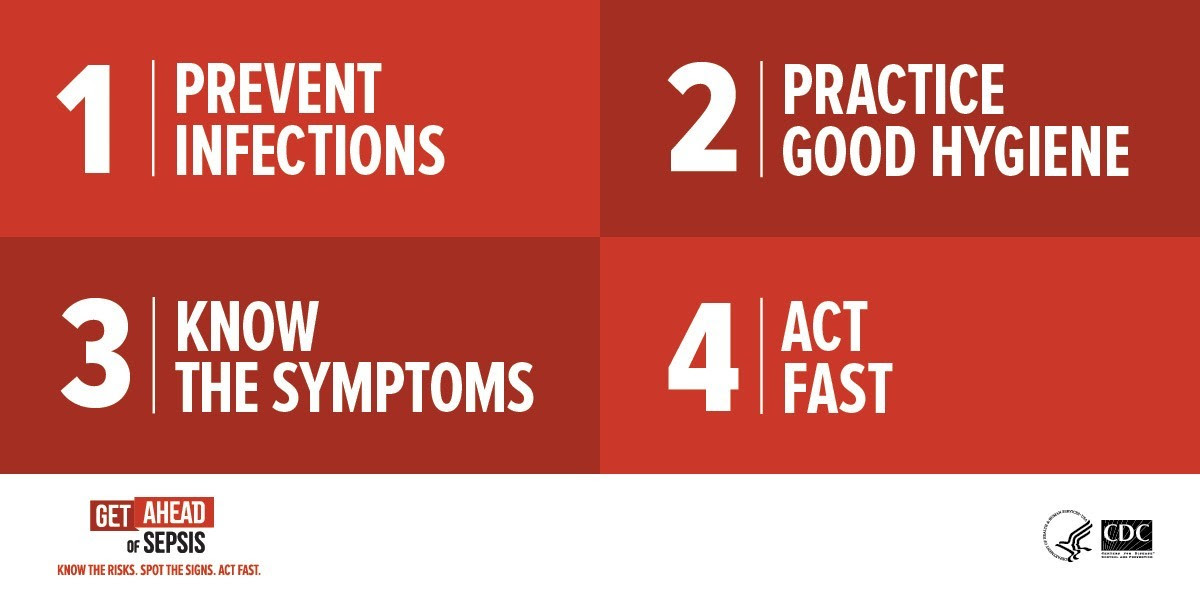Share Lifesaving Information about Sepsis Today

Each year, at least 1.7 million adults in America develop sepsis, and nearly 270,000 die as a result. More important than these numbers are the people sepsis impacts. Each person affected by sepsis highlights a unique gap that needs to be addressed. CDC has learned and is continuing to learn more about sepsis and from each situation, so we can more effectively prevent sepsis and its complications.
Throughout the year and especially this month, Sepsis Awareness Month, leading sepsis experts around the world come together to unite in the fight against sepsis and help raise awareness for this little-known medical emergency. Progress has been made in sepsis recognition, implementation of clinical protocols, innovative research for better outcomes, and the establishment of policies. However, there is still much more to be done.
CDC is dedicated to helping everyone know how to spot the signs and symptoms of sepsis and prevent infections that could lead to sepsis. You can help by sharing CDC’s Get Ahead of Sepsiseducational resources with a patient, family member, or colleague. It could save a life.
It is important that everyone know:
- Sepsis is the body’s extreme response to an infection; seek medical attention if an infection is not getting better or is getting worse.
- Early recognition of sepsis is critical, so know the signs and symptoms.
- Swift action and timely treatment increase a patient’s chance of survival.
- When sepsis is suspected, healthcare professionals should start antibiotics as soon as possible and reassess the antibiotic therapy within 24-48 hours to stop or adjust therapy as needed. Be sure antibiotic type, dose, and duration are correct.
CDC’s work will not stop after Sepsis Awareness Month and we need your help to keep the momentum going. We will continue to work with clinicians, researchers, and healthcare providers to promote the importance of infection prevention, sepsis early recognition, timely and appropriate treatment, and the ongoing support of sepsis survivors. CDC looks forward to continuing to provide lifesaving information for patients, families, and healthcare providers to keep sepsis top of mind. Together, we can and are making a difference.
For more information about sepsis and preventing infections, visit www.cdc.gov/sepsis.
Our work will not stop after #SAM2018 and we need your help. Share our FREE sepsis educational resources with a patient, family member, or colleague, so they know how to spot the signs and symptoms and prevent infections. It could save a life. #GetAheadofSepsis bit.ly/2zn8daC























.png)









No hay comentarios:
Publicar un comentario